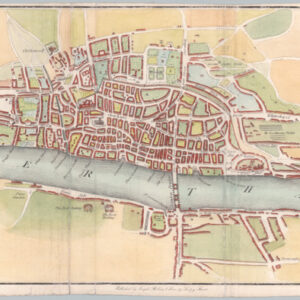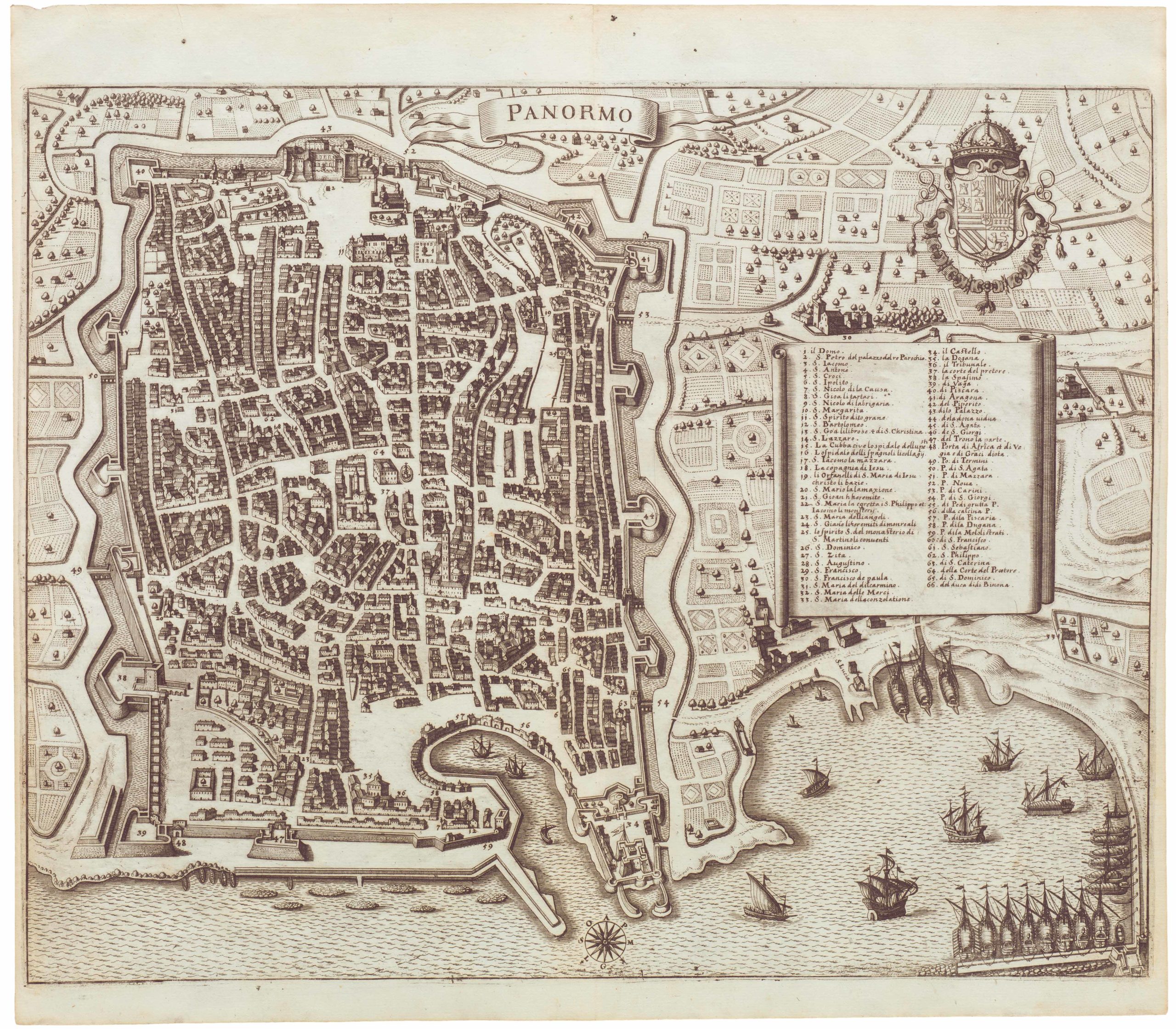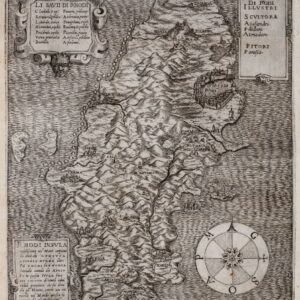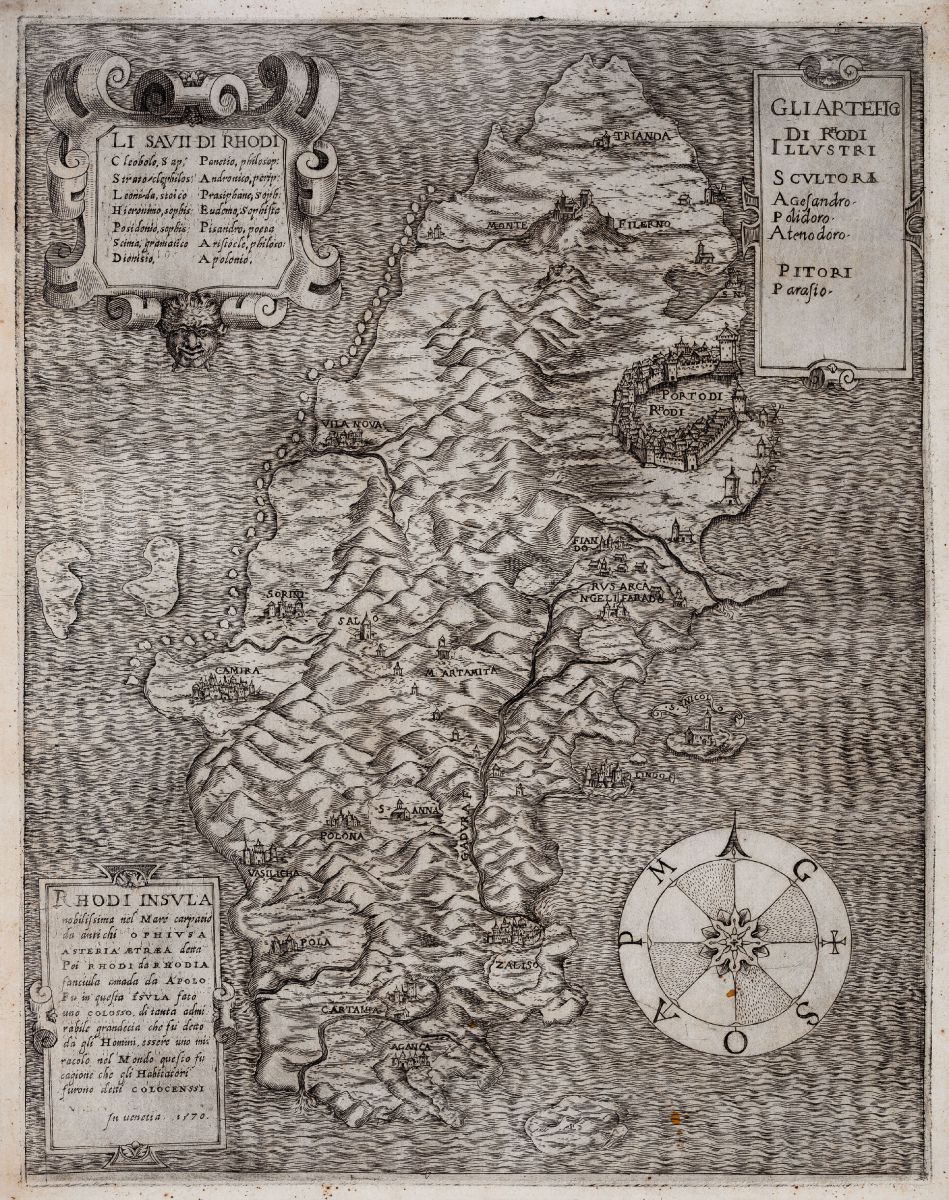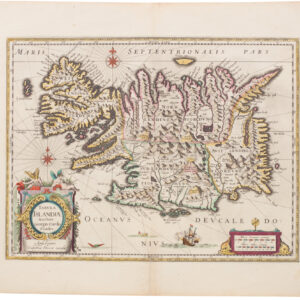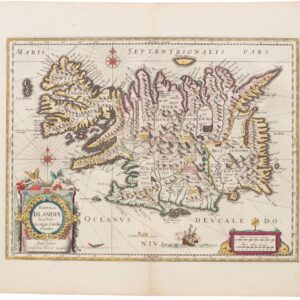Coronelli’s decorative Mediterranean Sea.
Ristretto del Mediterraneo…[with] Parte Orientale del Mediterraneo…
Out of stock
Description
This antique map of the Mediterranean Sea, created in 1691 by the esteemed Italian cartographer Vincenzo Coronelli, is a remarkable example of 17th-century cartography. It showcases a blend of detailed geographical information and elaborate artistic embellishments.
The map’s main title, “Ristretto del Mediterraneo,” is prominently displayed on a grand banner within an ornate cartouche in the upper left corner. Above Greece, the secondary title is elegantly presented in a garland. A detailed explanation of the map’s features is draped on a banner held by symbolic figures—a sturdy elephant, a majestic Venetian lion, and a powerful eagle—representing various cultural and political entities of the Mediterranean region during this period.
Surrounding the map are the armorial bearings of various cities and states, providing historical context and a glimpse into the political landscape of the time. These symbols are scattered across the map, enriching its visual appeal and informational content. The map details the coastlines and islands of the Mediterranean Sea, from the western shores of Spain and France to the eastern extents of the Ottoman Empire and North Africa. It includes major cities, ports, and geographical features labeled with period-specific names.
Cartographer(s):
Vincenzo Maria Coronelli (1650 – 1718) was a Franciscan printer, cartographer, and globe-maker from Venice. Due to his religious background, many of his charts have been signed P. Coronelli, meaning Père or ‘Father’, and referring to his status as a friar of the Franciscan Order. He was appointed official cosmographer for the city of Venice and was later employed as royal cartographer to the King of France. In particular the latter position meant that he had access to the latest records and materials from French pioneers and voyages of exploration. This caused many of his charts to be cutting-edge innovations that redefined the newly discovered parts of the world in an entirely novel fashion. It also meant that Coronelli would have no scruples in declaring uncontested or virgin land in the New World as part of Nouvelle France. This is exemplified in Coronelli’s celebrated 1685 chart of Western Canada or Nouvelle France, in which the official French territories have been expanded thousands of miles to the west and south, so that most of the Midwest, including the Mississippi Valley, has been subsumed under a French claim.
Coronelli’s access to the latest French sources and intelligence is part of what has made his maps so cartographically decisive and collectible. An example of this is found in his 1688 chart of upper Mexico and the Rio Grande (modern Arizona, California, and parts of New Mexico). This map was, at the time of its publication, one of the most detailed and accurate maps of the Rio Grande on the market. The detailed information conveyed in Coronelli’s map came directly from Diego Penalosa, the Spanish governor of New Mexico (1661-63) who turned rogue and provided the French King with a wealth of strategic geographical information. His ambition was to lure the French into attacking New Mexico from the neighboring territory of Louisiana. Despite the controversial source of his information (or perhaps precisely because of it), Coronelli does not hesitate to lay credit where credit is due, and mentions Penalosa directly in the map’s cartouche.
Condition Description
Very good.
References
